|
BULB LOG ----- 13 29-3-05
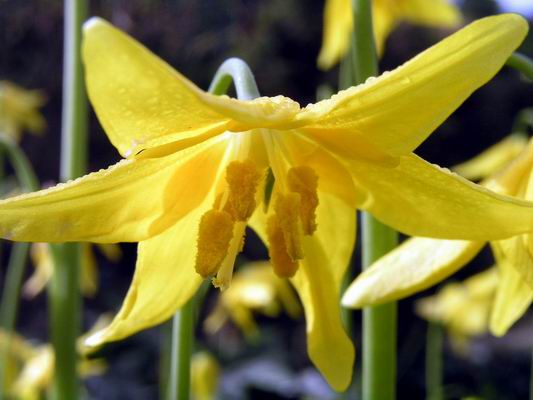
Erythronium toulumnense flower
With all the talk, in the UK, of how early things are flowering this year I can report that we are at exactly the same stage, within a day or two, as we have been for the last two years. I can say this with confidence as I have the bulb log picture files to check back on and I take far more pictures than appear on the log each week. I store all the images I take in weekly files and each picture file also carries the date and time it was taken so I can tell to within the hour what stage of growth the plants I picture are at.
This Erythronium oregonum which came through the collection of E.B. Anderson is always the first of this species to open its flowers fully.
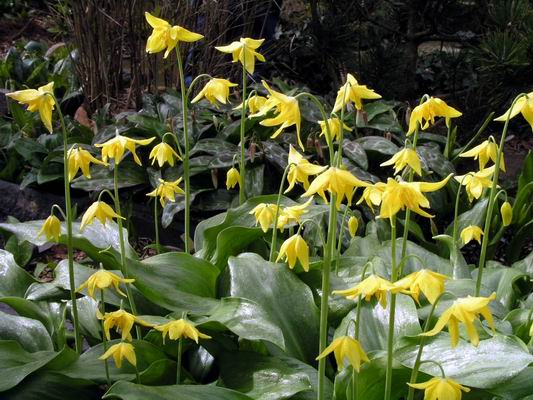
Erythronium toulumnense
Its flowers have that nipped look with the tips of some of the petals pointing inwards until the flower is mature and reflexes fully; this is one of the distinguishing features of this form.
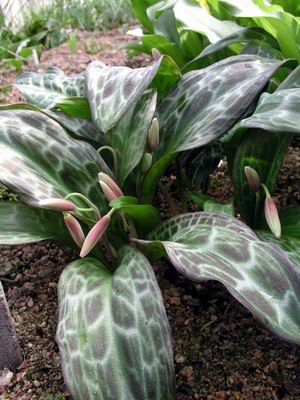
Erythronium 'Craigton Beauty'
Many erythroniums have such wonderfully patterned leaves which are always at their dramatic best when they are young, before they lose that glow of youthfulness through exposure to our climate, (much like humans).
Erythronium 'Craigton Beauty' is our own selection raised from E. 'White Beauty' seed. As the seed was just a result of open pollination I do not know if it was selfed or if it crossed out and another species was involved. The result is that the leaves are much better marked than 'White Beauty' while the flowers are similar.
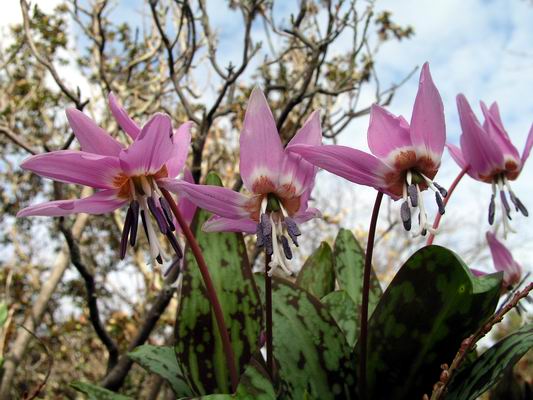
Erythronium dens-canis
While not the first to appear through the ground Erythronium dens-canis is always among the first to open its flowers. The first of them have just opened in the last week and we have a wide range in colour from very dark purple to white.
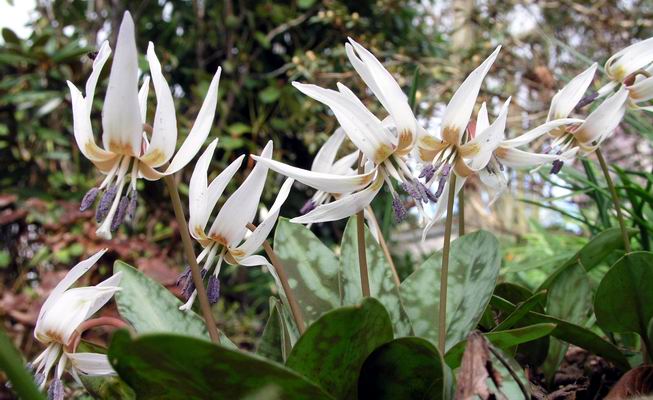
Erythronium dens canis 'Snow Flake'
One of the most reliable of the white forms is Erythronium dens canis 'Snow Flake'. It flowers every year provided you do not let the clumps get too congested. Lifting and splitting every three to five years should ensure that you get a good rate of increase and also keep the clumps flowering freely.
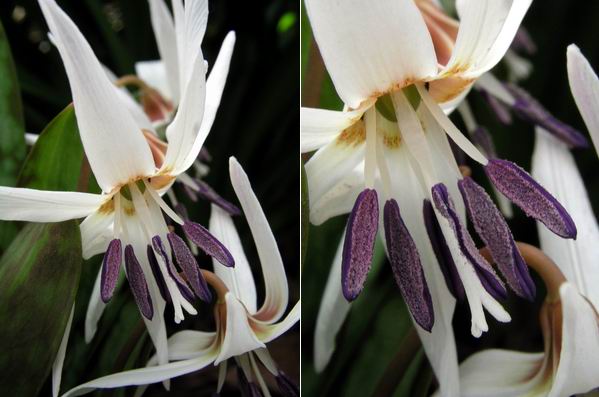
Snow Flake flower
When the clumps get too congested the individual beauty and shape of the flowers is lost. I like to be able to see each flower with its reflexed white petals and the violet pollen a diagnostic feature of E. dens canis.
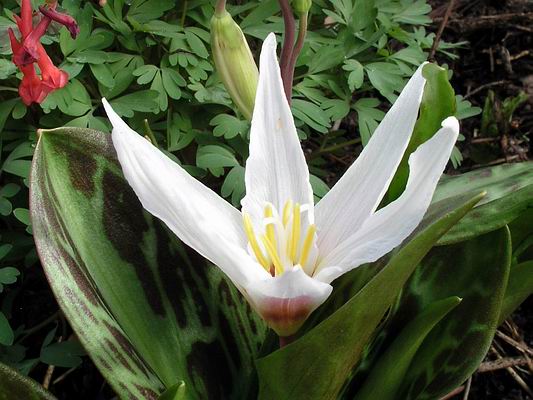
Erythronium flower
I have shown you this individual Erythronium oregonum flower before, it always opens facing upwards and it does not turn over until after it has been fertilised. I like to use this as an example of how close the relationship of Erythronium is to Tulipa.
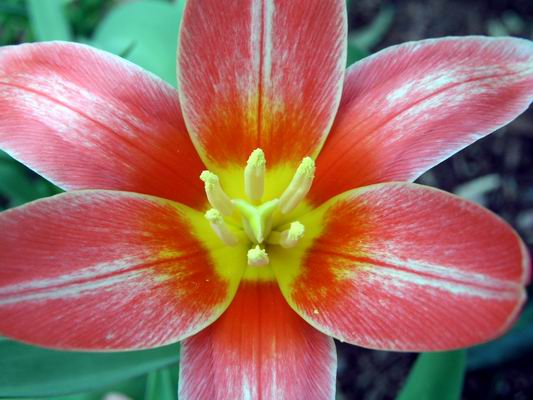
Tulip flower
Both are members of the family Liliaceae and share many common features, have a close look next time you see them together.
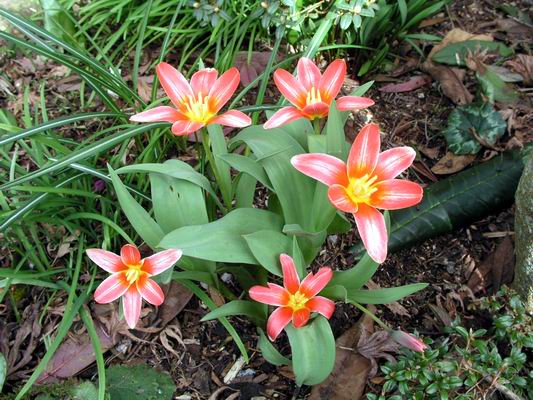
Tulipa 'Shakespeare'
Tulipa 'Shakespeare' happens to be one of the original bulbs we introduced to our garden nearly 30 years ago and some of these are still flowering. I cannot say the same of many tulips which have dwindled and disappeared, some slowly and others very quickly in our cool moist northern climate. Many of the tulips require a much warmer drier period in the summer than they can ever hope to get in Aberdeen. We have a nice selection of mostly the dwarf species that do repeat flower and have survived many years with us, I will feature them as they come out.
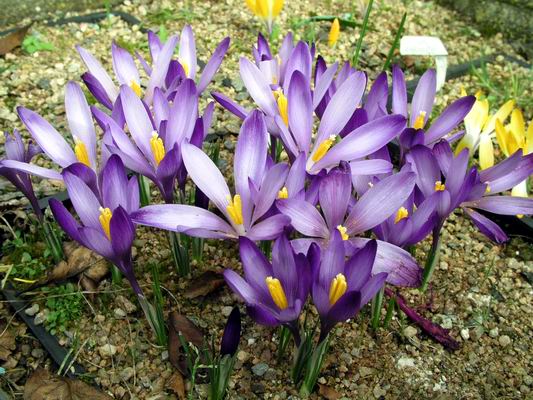
Crocus pelistericus
We are coming to the end of the Crous flowers this season and as is often the case we have saved the best for last, well, they are all lovely. Unlike so many of the tulips Crocus pelistericus thrives in our cool moist conditions coming as it does from moist areas in the wild where it flowers at the edge of the melting snow.
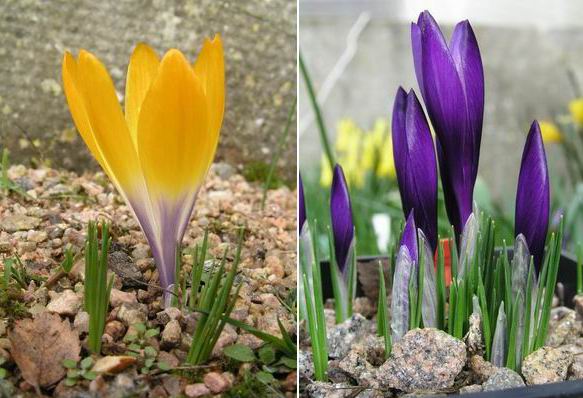
Crocus scardicus and pelistericus
Crocus scardicus grows in similar conditions and also thrives in Aberdeen. These are two of the richest coloured species within Crocus. The rich deep purple of pelistericus and that unique combination of yellow and purple that all so called fashion gurus will tell you should never be combined, (luckily nobody told Mark Rothko that) make these two stand out in a crowd.
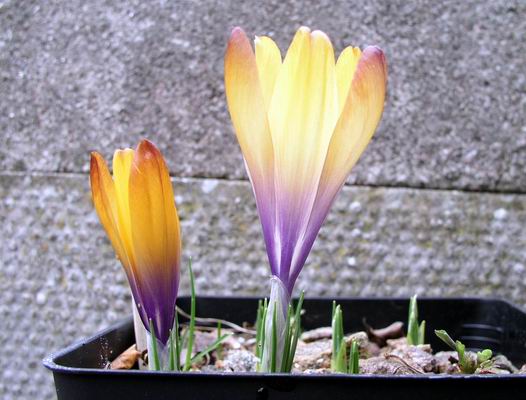
Crocus gothenbergensis
I do not think that anyone would willingly want to cross these two species but it has happened. Henrik Zetterlund, from Gothenberg Botanic Gardens in Sweden, raised some and the cross was named Crocus gothenbergensis. I suspect that Henrik had the same experience as we did, with the above plants, which we raised from our own seed collected from C. pelistericus which grows right beside C. scardicus in our frames and the bees have done the rest producing this much sought after crocus. I can only suspect that this is because it is still rare, I cannot imagine any one choosing this mongrel over either of the exquisite parents, just as well that we all have different tastes.
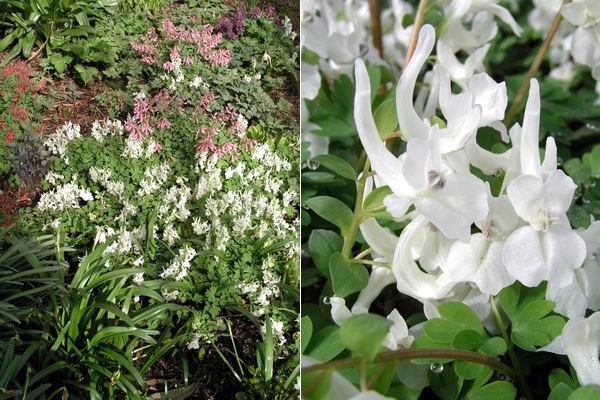
Corydalis malkensis
Talking of Henrik and Gothenberg we owe much of our enthusiasm for and knowledge of Corydalis to the Gothenberg crew. The creamy white of Corydalis malkensis makes for a perfect combination with the reds and pinks of the solida forms. Corydalis malkensis does not increase by splitting of the corms like the solidas but it produces lots of seeds and spreads itself around but is never a pest. I have heard some people refer to it as a 'weed species' I love it and would never refer to it that way. It flowers so early and by early to mid May it is gone under ground again making way for other plantings.
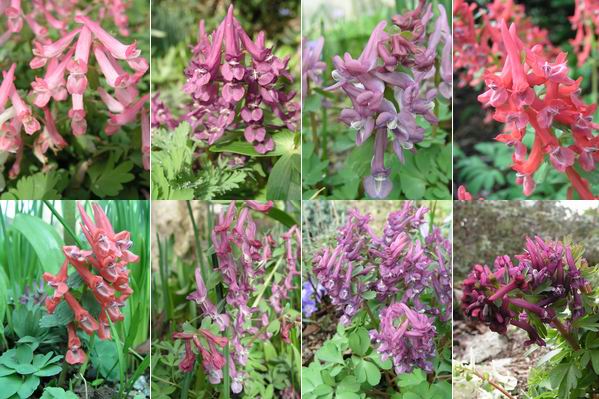
Multiple corydalis
I will leave you this week with a montage of some of the colour forms of the solida group, I know that we are lucky to have this variation in colour and form that many of our friends in the Southern hemisphere would love to get hold of. Most of these have self seeded around the garden and give us such wonderful colour at this early stage in the year.
^ back to the top ^
|

